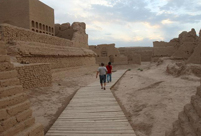 High speed train attendants receive training in Chongqing
High speed train attendants receive training in Chongqing
 Rare rainbow clouds seen in Fujian
Rare rainbow clouds seen in Fujian
 Small bracelet going global
Small bracelet going global
 Aerial Photography: Amazing Tianshan Mountains
Aerial Photography: Amazing Tianshan Mountains
 'Animals' in 2014 World Cup
'Animals' in 2014 World Cup
 Not afraid of death
Not afraid of death
 Chen Guangbiao ads on A15 of NYT to host charity luncheon for 1,000 poor and destitute Americans
Chen Guangbiao ads on A15 of NYT to host charity luncheon for 1,000 poor and destitute Americans
 Passionate bar babies and fans feel the charm of World Cup 2014
Passionate bar babies and fans feel the charm of World Cup 2014
 US aircraft carrier docks in HK, welcomes PLA aboard
US aircraft carrier docks in HK, welcomes PLA aboard
 Graduation season: 'Take graduation photos to mark our love'
Graduation season: 'Take graduation photos to mark our love'
BEIJING, June 24 -- Over 2,000 years after the majestic ancient Silk Road linked the East and the West, the Eurasian network of trade routes is being overshadowed by conflicts and competition fueled by hunger for natural resources and geopolitical interests.
Today, there are different versions of new Silk Road initiatives in the central Asian passageway, such as the American "New Silk Road," Japan's "Silk Road Diplomacy" and China's "Silk Road Economic Belt."
While some of them are based on belief in enduring peace and common prosperity for all countries, others seek domination by preaching confrontation and excluding other contenders.
The most relevant case is the U.S. Silk Road revival project. Though it eyes an economically vibrant and inter-connected central Asia, the project is heavily ideologically loaded, excluding its political rivals such as Iran, and forcing others to take sides.
The U.S. initiative can be characterized in a bracket with the superpower's military intervention in Afghanistan and Iraq that has only ended with chaos and dented political trust.
Those who are trying to rejuvenate the Silk Road should be aware of what kept it thriving historically: peace, mutual benefit, inclusiveness and openness. Any road that betrays the Silk Road spirit will not last long.
Unlike the great sea routes to the New World discovered by the European navigators that prompted bloody conquest and colonization, the Silk Road was always a road of peace. It was only in the 14th century that escalating ethnic clashes, along with the launch of sea routes in south China, gradually forced the road into decay.
The long-lasting peace was deeply rooted in booming trade along the route.
The 4,000-mile road, which threaded the great civilizations of China, India, Babylon, Arabia, Greece and Rome, was packed with caravans transporting Chinese silk, Indian spices and Persian brocade.
Frequent trading along the road bound countries economically, and stability came out of shared interests. When the trading was at its peak, conflicts were rare in the region.
That is why when China proposed the building of the Silk Road Economic Belt last year, it called for strengthening of trade ties in the region, which lags behind economically.
Statistics have shown China's sincerity in expanding trade with countries in central and west Asia. In 2013, China's imports from Arab countries amounted to 140 billion U.S. dollars. Its trading volume with the five central Asian countries has been over 100 times as much as the figures in 1992, when they established their diplomatic relations.
Sustainable trading, based on mutual benefits and open to all, is expected to lead to constant exchanges of skills and religions, and yield better mutual understanding and tolerance, as did the ancient Silk Road.
It was there that Chinese inventions such as the papermaking and the compass were spread to Europe and that Buddhism and Christianity were introduced to China.
Nourished by different civilizations, the road remained culturally and religiously inclusive. Exquisite Buddhist sculptures and cave paintings in Dunhuang, a major stop on the road, are a testament to the blending of oriental and Western art.
For the time being, the Eurasian heartland faces traditional and non-traditional challenges and threats including cross-border organized crimes, religious conflicts and terrorism. Only by abandoning ideological prejudice can countries join hands to address these challenges.
No nation is powerful enough to dominate the vast region that once thrived thanks to its openness and inclusiveness. A zero-sum mentality seeking confrontation and exclusiveness on the Silk Road will benefit nobody.
 Silk Road, China's Grand Canal listed as World Heritage Sites
Silk Road, China's Grand Canal listed as World Heritage Sites Chinese 'Slumdog Millionaire'
Chinese 'Slumdog Millionaire' PKU students imitate famous paintings in real-person photos
PKU students imitate famous paintings in real-person photos Stewardesses in Brazilian soccer jerseys
Stewardesses in Brazilian soccer jerseys Puzhehei: land of idyllic beauty
Puzhehei: land of idyllic beauty Chinese navy fleet visits Cape Town, South Africa
Chinese navy fleet visits Cape Town, South Africa PLA naval cadets toss their hats at graduation ceremony
PLA naval cadets toss their hats at graduation ceremony Graduation photo ideas: reliable alumnus and happy alumna
Graduation photo ideas: reliable alumnus and happy alumna Super daddies in 2014 World Cup
Super daddies in 2014 World Cup Images of Xi'an: Part one
Images of Xi'an: Part one In Pictures: Female fans of World Cup
In Pictures: Female fans of World Cup Girl takes father’s portrait to travel the world
Girl takes father’s portrait to travel the world China's top 10 representative architectures
China's top 10 representative architectures Photo story: A day of 'mini girl'
Photo story: A day of 'mini girl' Top 20 hottest women in the world in 2014
Top 20 hottest women in the world in 2014 Day|Week|Month